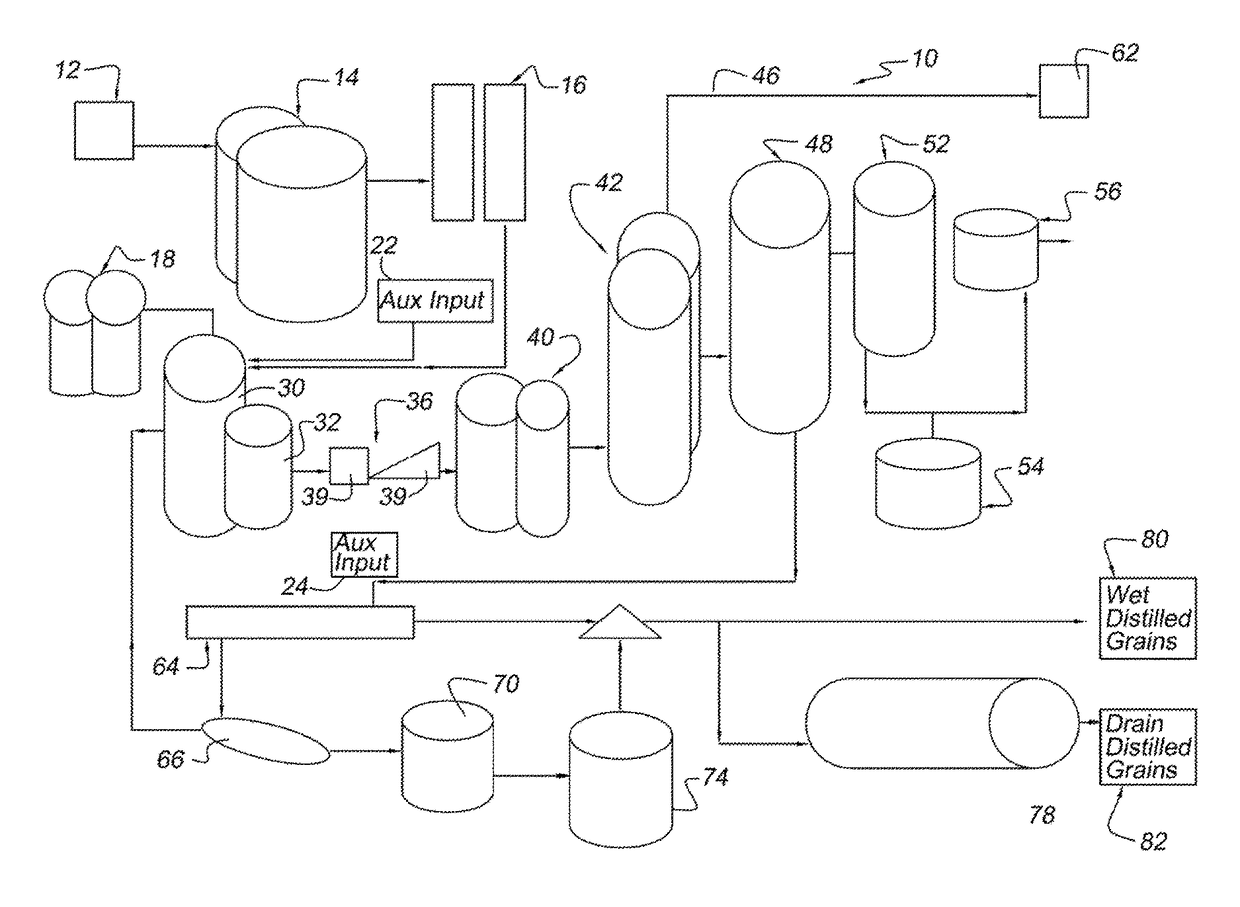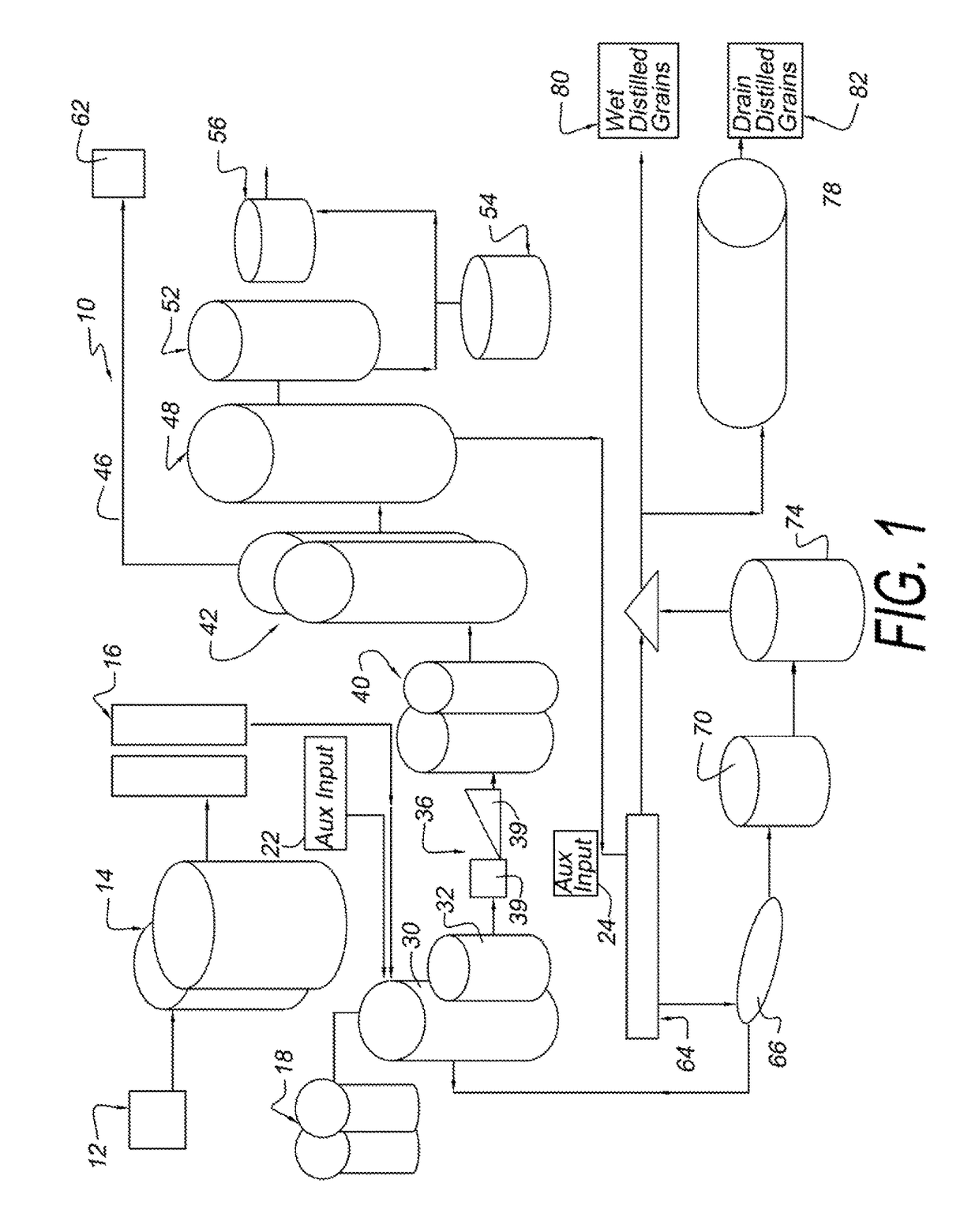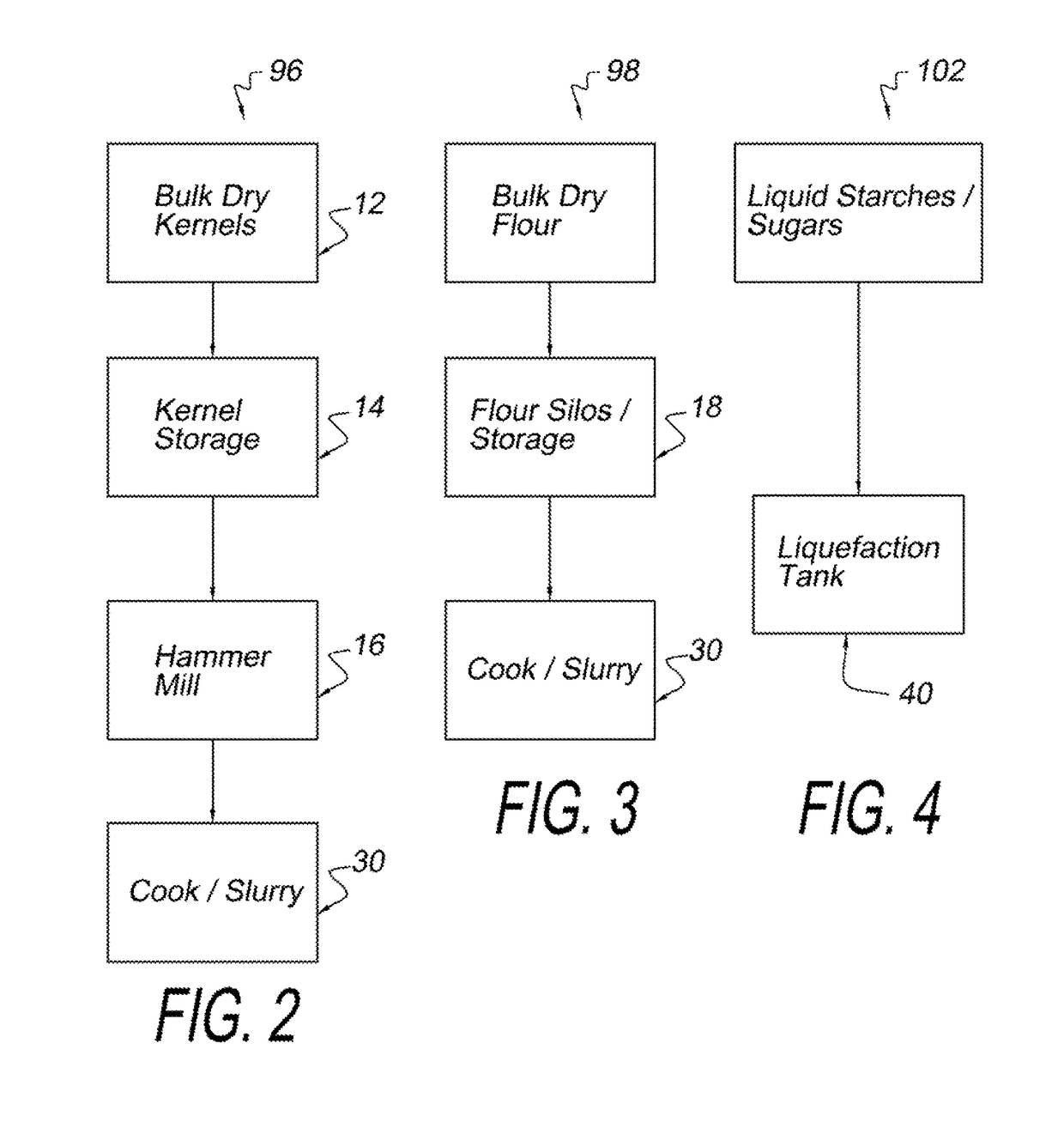It is difficult to remove the final 5% of water from the ethanol product through distillation because this final 5% water maintains itself in an azeotropic mixture.
For example, in a “pasta
plant” there will often be some significant amounts of
plant waste that occur because of broken pasta, pasta trimmings, floor sweepings and other pasta scraps that somehow do not make it to a finished boxed product.
One difficulty with dealing with such
consumer products relates to their packaging.
Along with the cost of
purchasing the feedstock, the costs of handling the feedstock in the
plant also affects the overall “price of feedstock” and hence, affects the profitability of the use of the feedstock in the ethanol production facility.
It can be very difficult, and very labor intensive for one to separate out, for example, the packaging that accompanies a
pallet full of spoiled cake mix boxes; or alternately, to open up pallets of spoiled sodas to dump the sodas in the process input, while throwing away the remaining bottles.
Prior to the Applicant's invention, it was difficult, if not impossible for ethanol plants to switch easily between various feedstock types.
One thing that made it difficult to switch between feedstocks of different origin, such as switching between a
corn flour based feedstock and a
wheat flour based feedstock was the different
starch content of the various different feedstocks.
However, it is even more difficult for a facility to switch between a “flour” feedstock such as a
corn flour, and a “kernel” feedstock, such as kernel corn because of the differences in handling required for the different feedstocks.
If the cost of that particular feedstock rises, and it is difficult for one to maintain consistent feedstock input prices, the cost of producing ethanol at a constant, reasonable cost becomes challenging.
Unfortunately, an ethanol producer is not always in a position wherein he / she can raise the price of its finished ethanol product to reflect the increase in its feedstock prices.
One difficulty faced by ethanol producers is that the prices of feedstock corn and finished product ethanol do not always rise or fall together in a lock-step fashion.
In some situations, the ultimate buyers of the ethanol output want to pay a constant price for their ethanol, and thus often desire to lock in the ethanol producer into a long term fixed price contract that may not provide the plant flexibility to change its price charged to reflect the changes in prices of the feedstock.
Unfortunately, the lower prices available through strategically timed purchases are often insufficient to achieve overall profitability of the plant or requires excessive market speculation.
For example, the weather during a certain year may be highly unfavorable for corn, but highly favorable for wheat crops, thus causing the price of corn to rise and the price of wheat to fall.
For example, from time-to-time a
train car load of a flour product or
sugar product that is destined for a food processor, such as Kellogg's or Pillsbury is determined to be off-spec and / or have an unacceptable
contamination issue from a variety of factors including excessive
moisture, natural toxins, or
insect infestation.
This
infestation will often make the car load of flour unacceptable for a human and / or
animal food processor.
Additionally, inefficiencies within the logistics and supply chain of grain products and flour products often causes flour or grains to begin to rot while being stored in silos, bins or rail cars.
Although such rotted flours and grains may be unacceptable for use in
food products, they are likely still well suited for use in the production of ethanol for use as a motor vehicle fuel blend stock.
 Login to View More
Login to View More  Login to View More
Login to View More 


